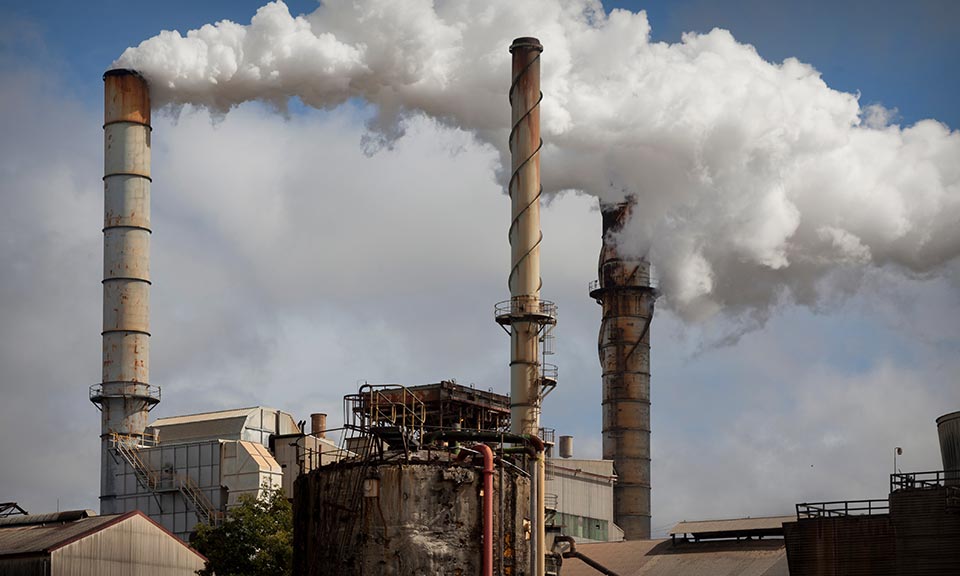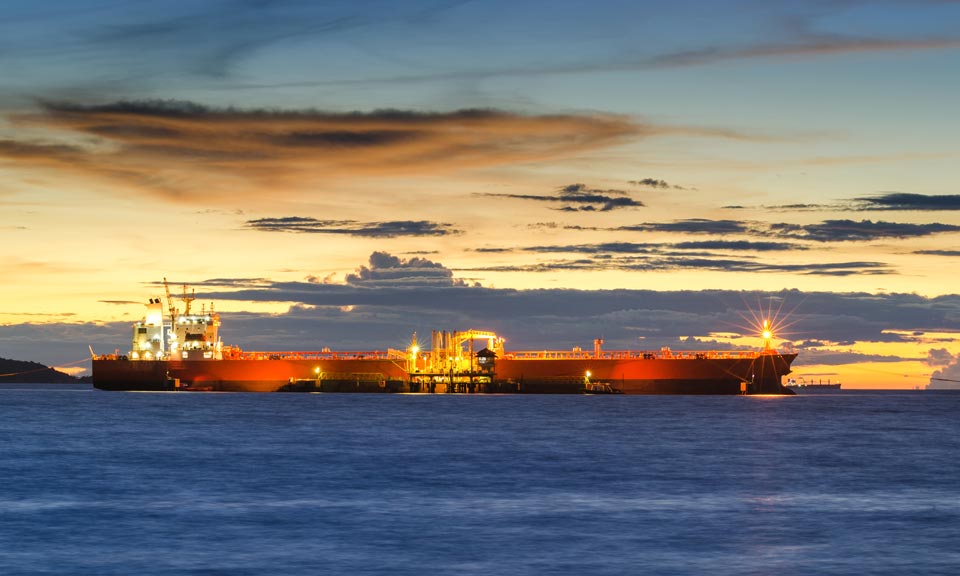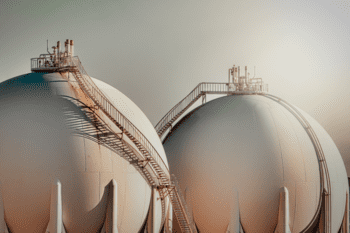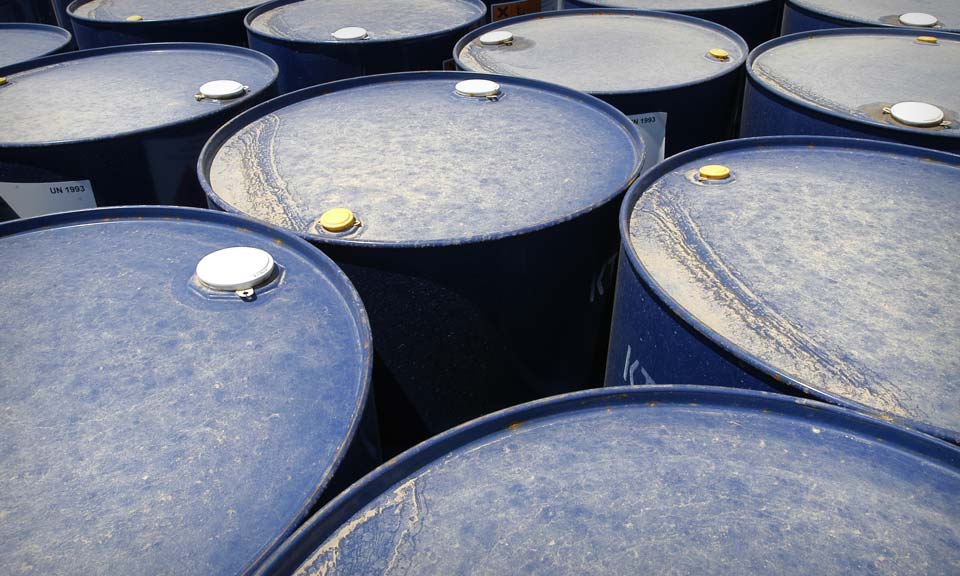FUJAIRAH DATA: Oil product stockpiles rebound after exports slowdown

Oil product stockpiles at the UAE's Port of Fujairah rose 1.5% in the week ended Dec. 5 led by gains in light and middle distillates, according to Fujairah Oil Industry Zone data published Dec. 7.
Total inventory was 22.853 million barrels on Dec. 5, up 1.5% from a week earlier when the total was the lowest since the end of October. Stockpiles are up 43% since the end of 2021.
November exports of oil products from the port dropped to 598,000 b/d, the lowest since April, from 653,000 b/d in October, Kpler data showed. Singapore remained the top destination for exports, dominated by fuel oil, while Russia was the biggest origin country for the month.
Fuel oils used for power generation and marine bunkers are counted in the heavy distillates category, which showed a 4.9% drop in the week ended Dec. 5 to 12.56 million barrels, the lowest in six weeks. Supplies of fuel oils have grown 32% since the end of 2021. Russia has increased fuel oil shipments to Fujairah this year, reaching 106,000 b/d in November, only the third month on record when supplies exceeded 100,000 b/d, according to Kpler.
Fuel inventories declined over the week ended Dec. 5 as bunker demand has recently climbed and congestion at barges refueling terminals eased, traders said.
Buyers are keen to fix supply requirements in advance of year-end holidays, when traders are usually off and the market slows, traders added.
Barges filled with low sulfur fuel oil over Dec. 3-4 are available for deliveries in three to four days, market sources said.
"Refueling schedules [for barges] are not tight anymore. Terminal congestions during the last week of November delayed loading operations that tightened barge availability till Dec. 10," a Fujairah-based bunker supplier said.
"The market is still concerned about the potential for excess supply [of LSFO]," a second bunker supplier said, suggesting that Fujairah's bunker premiums are still pressured by plentiful stockpiles.
The Platts Fujairah-delivered marine fuel 0.5% sulfur bunker premium over the FOB Singapore marine fuel 0.5% sulfur cargo assessments climbed to average $17.44/mt Dec. 1-6, from $10.54/mt for all of November, S&P Global Commodity Insights data showed.
Light distillates such as gasoline and naphtha are up the most this year, at 64%. Russia has been shipping gasoline and naphtha to Fujairah consistently since July, after only sporadic cargoes since at least 2017, according to Kpler. Stockpiles of light distillates rose 1.5% in the week ended Dec. 5 to 7.133 million barrels, a two-week high.
Middle distillates such as jet fuel and diesel rose 6.3% to 3.16 million barrels over the week to Dec. 5, bringing them up 48% since the end of 2021.

News
Russia, one of the world’s largest oil suppliers, has increasingly turned to non-Western firms to transport its crude to overseas buyers during its ongoing war with Ukraine . With a dual goal of undermining Russia’s war chest without creating significant disruptions to global supplies amid inflation pressure, G7 countries and their allies have banned tanker operators, insurers and other services firms from facilitating seaborne Russian crude exports unless the barrels are sold for no more than $60/b. The price cap regime, which came into force Dec. 5, 2022, does not directly cover tankers flagged, owned and operated by companies outside the G7, the EU, Australia, Switzerland and Norway, and not insured by Western protection and indemnity clubs. While such ships tend to be older and less maintained, their share in Russia’s crude exports market has been rising in recent months amid strengthening prices of Urals -- the OPEC+ member’s flagship crude grade -- and tightening sanctions enforcement by the West. Non-price-capped tankers have a larger market share in shipping Russia’s Pacific crude exports, according to analysis of S&P Global Commodities at Sea and Maritime Intelligence Risk Suite data. Crudes such as Sokol, Sakhalin Blend, and Eastern Siberia–Pacific Ocean grades are more often involved in these trades than Russian barrels from Baltic or Black Sea ports like Urals. Tanker operators in Greece, Europe’s top shipowning nation, managed to keep their traditionally strong market position in Russia in the first few months since the price cap took effect before giving ways to their peers in the UAE, Russia, China and Hong Kong. (Latest update: April 5, 2024)

News
Recording changes to Russian oil exports and EU oil imports since the war in Ukraine Russia’s war in Ukraine has triggered a major upheaval in the global oil markets, forcing Moscow to find alternative buyers and Europe to source new supplies as Western sanctions seek to clamp down on Moscow’s vital oil revenues. With an EU embargo and the G7 price cap on Moscow's oil now fully in place, Russian seaborne crude exports have remained largely resilient as displaced volumes of its discounted oil flow East. Russian oil product exports have also mostly held up with new buyers in Africa absorbing Russian diesel and other fuels now banned from Europe. (Latest update: April 3, 2024)

News
Initiative driven by demand for batteries from vehicles, energy storage IOC aims to be carbon-free by 2046 Tie-up comes as India supports NEV buildup Japan's Panasonic Energy and state-run Indian Oil Corp aim to finalize details for a joint-venture to manufacture cylindrical lithium-ion batteries in India as early as June to September, the Japanese battery maker said April 1. Both companies will engage in "a feasibility study regarding the utilization of battery technology to facilitate the transition to clean energy in India," Panasonic said, and have signed a binding term sheet with details to emerge "by the summer of this year." The initiative by the companies "is driven by the anticipated expansion of demand for batteries for two- and three-wheel vehicles and energy storage systems in the Indian market", it said. The collaboration comes as India takes steps to build up infrastructure for manufacturing and supporting new energy vehicles, especially in its interim budget for 2024-25. Following the budget announcement, Chinese automaker SAIC Motor and India's JSW Group plan to install a production capacity of 200,000 vehicles/year in India, focusing on NEVs, with ramping up to start from the end of 2024. In China, NEV is a term used to designate automobiles that are fully or predominantly powered by electricity and include battery electric vehicles as well as plug-in hybrid EVs and fuel cell EVs. IOC's tie-up with Panasonic will support the energy company's goals to be a zero-carbon emitter by 2046. India's lithium-ion battery manufacturing industry is expected to grow at a compound annual growth rate of 50% from 20 GWh in 2022 to 220 GWh by 2030, data from the India Brand Equity Foundation showed. Platts assessed prices for battery grade lithium carbonate at $14,350/mt CIF North Asia March 28, flat from the previous session, S&P Global Commodity Insights data showed, while lithium hydroxide stood at $14,000/mt CIF North Asia, also unchanged from the session before. Platts Connect: News & Insights (spglobal.com)

News
(Latest update March 28, 2024) OPEC+ ministers face the challenge of managing a slumping oil market as they discuss crude production for 2024. The following infographic highlights some key issues to watch out for during the upcoming talks. Related feature : OPEC+ committee meets as output cut policy finally boosts prices (subscriber content) Click for the full-size infographic